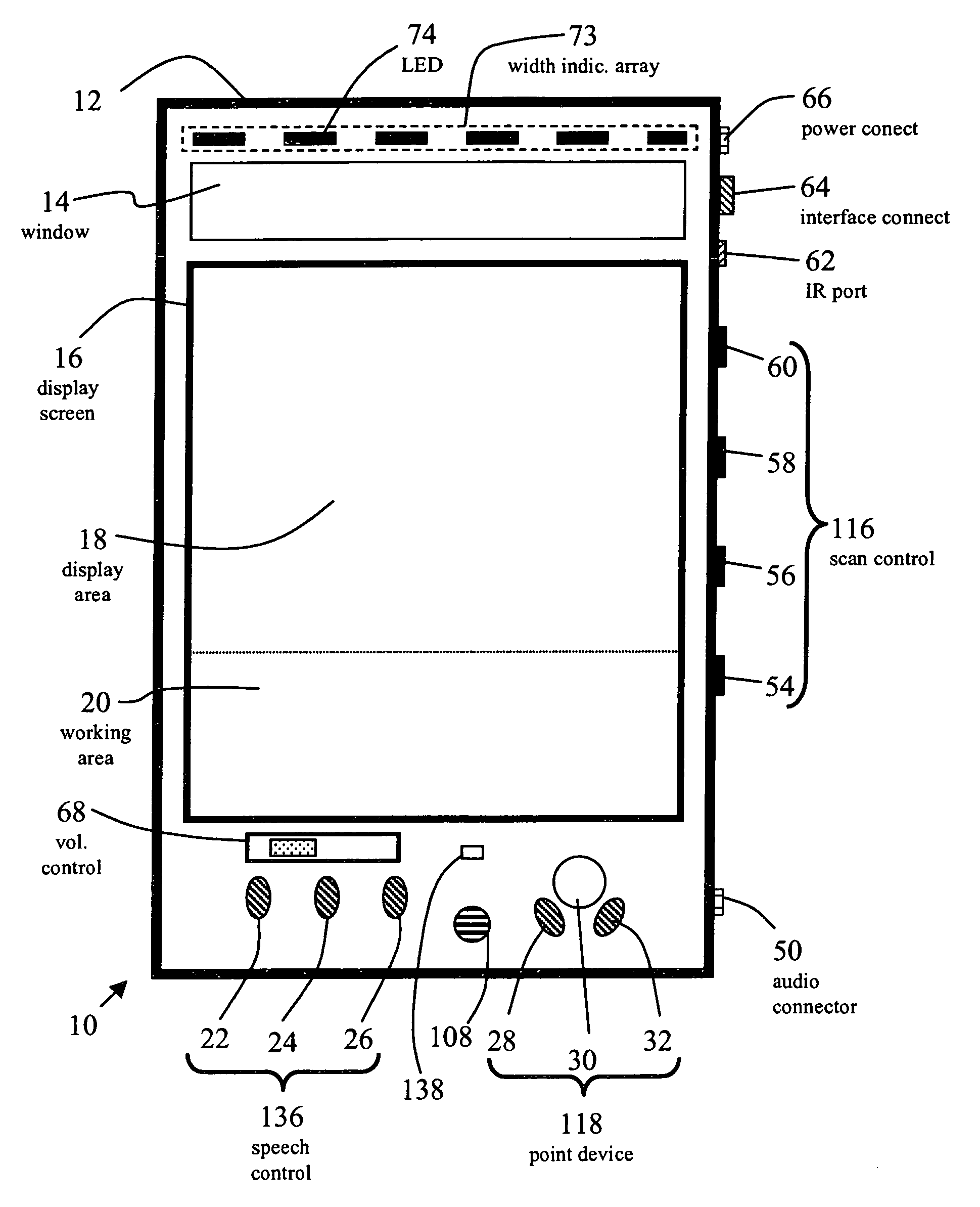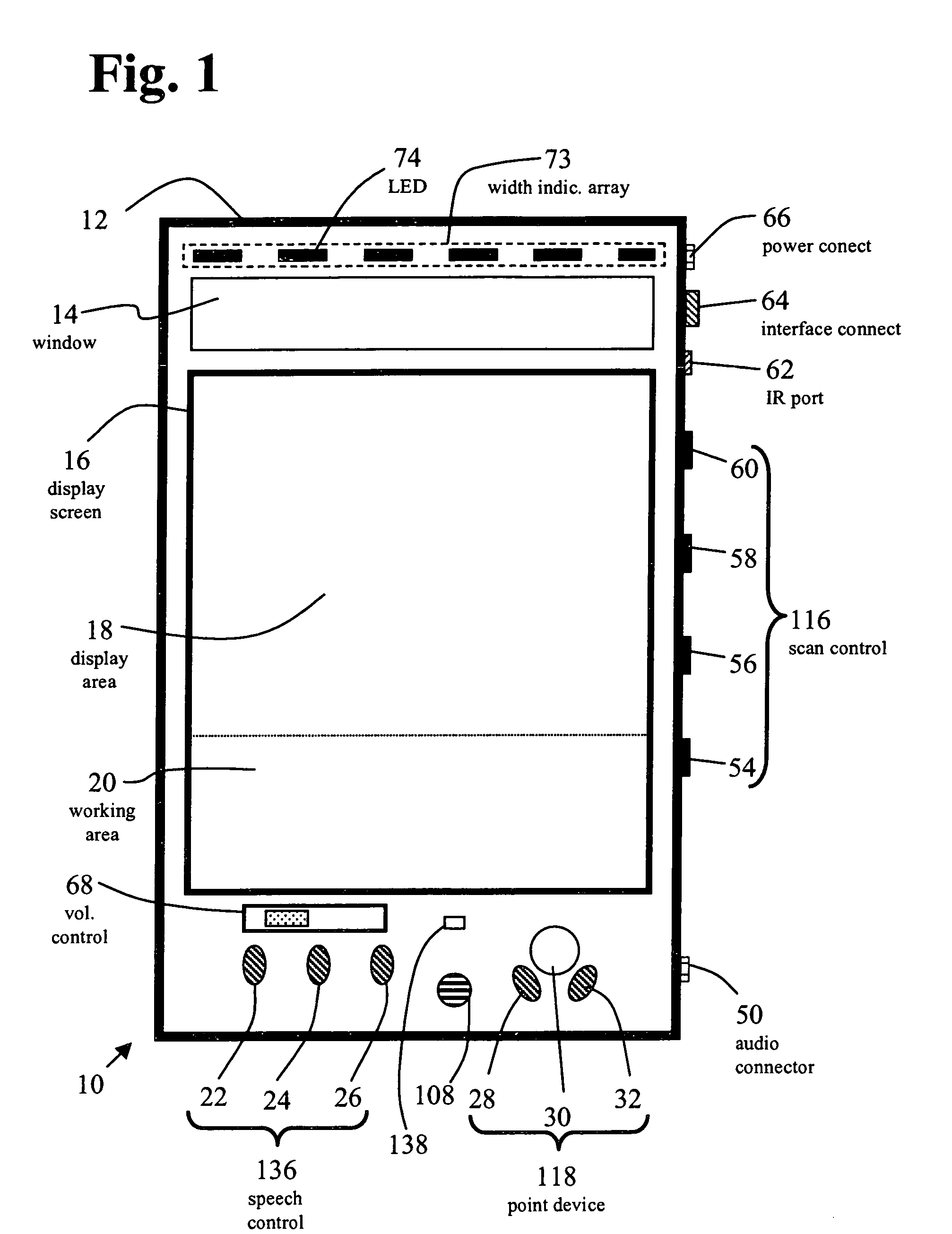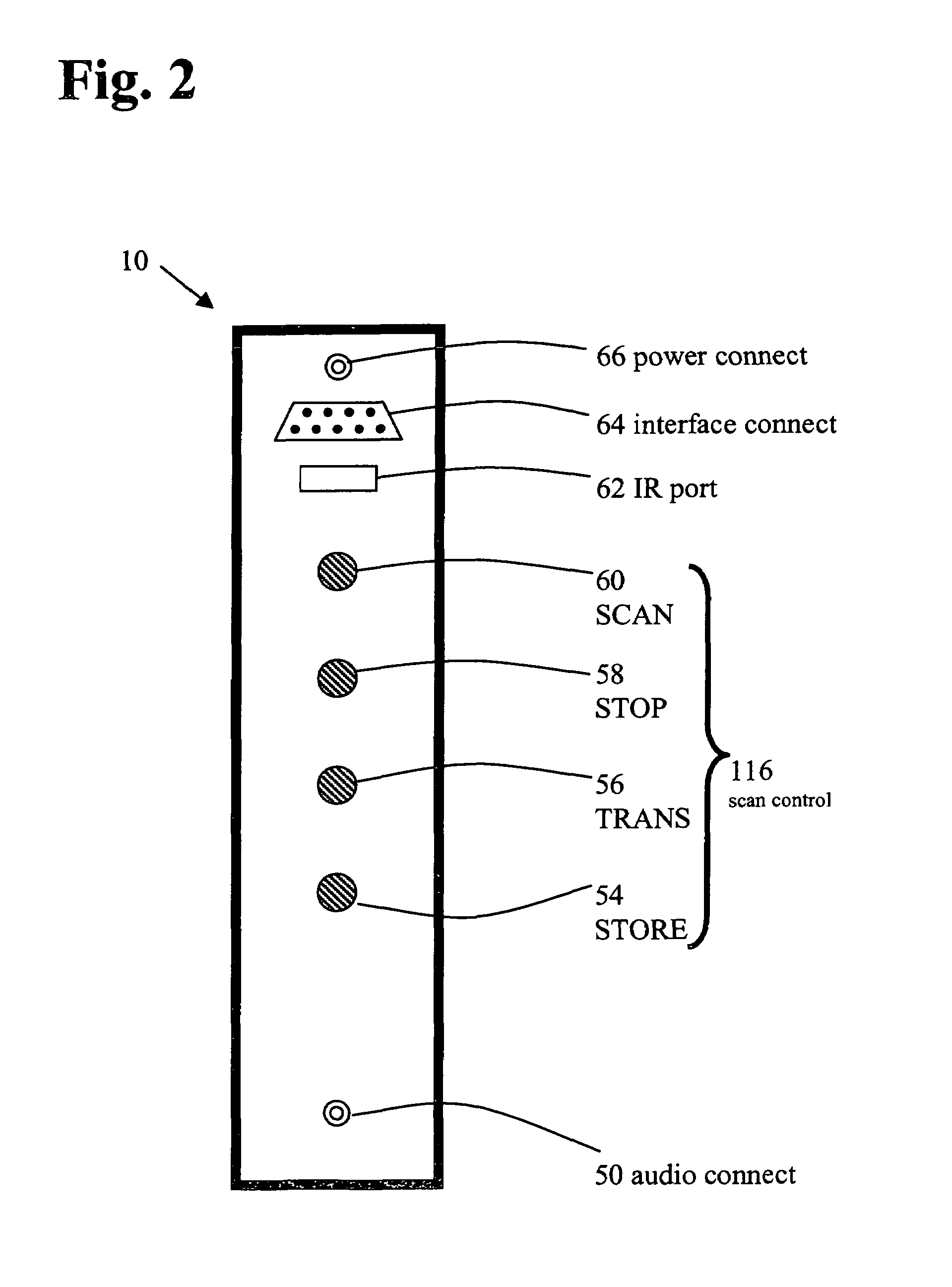Reading machine
a reading machine and scanner technology, applied in the field of reading machines, can solve the problems of insufficient linear scan that suffices for bar code reading, affecting note taking, and affecting the accuracy of reading, so as to achieve the effect of allowing note taking
- Summary
- Abstract
- Description
- Claims
- Application Information
AI Technical Summary
Benefits of technology
Problems solved by technology
Method used
Image
Examples
Embodiment Construction
[0029]The present invention is directed to a method and apparatus that enable users to easily scan a block or column of text and hear the text recited audibly via a voice module, or through a headset connection adapted for wired or wireless transmission. Scanned information can comprise multiple lines, selected segments of text such as columns or blocks, or substantially the entire textual content of a page. Scanned textual information may be processed by optical character recognition (hereinafter, “OCR”) means to form an electronic representation of the text for further processing, voicing, storage, or transmission to an auxiliary personal computer (hereinafter, “PC”) or a hand-held personal organizer (hereinafter, “PDA”). Retention of scanned text can comprise up to thirty pages or more. Links with a personal computer are optionally provided for upload or download of scanned information. Also contemplated are links permitting download of scanned information to a tape player. Attac...
PUM
 Login to View More
Login to View More Abstract
Description
Claims
Application Information
 Login to View More
Login to View More - R&D
- Intellectual Property
- Life Sciences
- Materials
- Tech Scout
- Unparalleled Data Quality
- Higher Quality Content
- 60% Fewer Hallucinations
Browse by: Latest US Patents, China's latest patents, Technical Efficacy Thesaurus, Application Domain, Technology Topic, Popular Technical Reports.
© 2025 PatSnap. All rights reserved.Legal|Privacy policy|Modern Slavery Act Transparency Statement|Sitemap|About US| Contact US: help@patsnap.com



